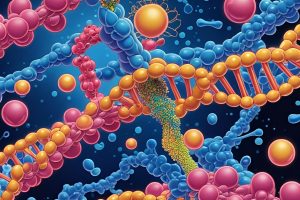
A breakthrough medical technology developed by a team of Johns Hopkins engineers promises to revolutionize how researchers analyze drug delivery systems. The molecular detection platform called cylindrical illumination confocal spectroscopy, or CICS, provides crucial insights into how medications are packaged and delivered at the molecular level.
The project, which began in 2017, recently received funding from the National Institute for Innovation in Manufacturing Biopharmaceuticals (NIIMBL) and will be presented to federal stakeholders and biopharmaceutical industry leaders at the 2025 NIIMBL National Meeting. The project is led by Tza-Huei (Jeff) Wang, a professor of mechanical engineering, and Hai-Quan Mao, a professor of materials science and engineering and director of the Whiting School of Engineering’s Institute for NanoBioTechnology.

Jeff Wang
Medicine delivery into the body is rapidly becoming a smaller, less invasive process. One key component of this is the lipid nanoparticle, or LNP, which carries into the body therapeutic payloads of mRNA. Currently, it has been challenging to accurately discern how many mRNA molecules an LNP carries and whether the mRNA is uniformly packed inside the particle. The Hopkins team’s platform not only makes such detailed analysis feasible but also accelerates the process while creating a more compact and user-friendly system.
“Current analytical methodologies and techniques out there cannot provide this really granular information,” said Sixuan Li, a postdoctoral scholar who has worked on the project since studying for his PhD at the Whiting School of Engineering. “As the field continues to explore the full potential of these particles, establishing standardized guidelines for drug delivery remains challenging. Our primary focus has been to develop a really capable technology to precisely analyze and report these critical parameters.”
The CICS platform works by tagging mRNA and LNP components with fluorescent signals and passing the sample through a detection plane. The detection plane reads the fluorescent signals and measures their intensity before comparing the strength of the intensities with that of a single mRNA molecule. This process allows researchers to peer inside the nanoparticles to differentiate between empty LNPs that do not contain mRNA, LNPs with mRNA, and free-floating mRNA in a sample.

Sixuan Li with the newest generation of the team’s device.
The end goal is to greatly improve quality control and efficiency by pinpointing how many mRNA molecules an LNP can carry and whether the mRNA is uniformly packed inside the particle.
“Even if doctors know that 100% of the mRNA has been loaded into the injection medium, they don’t know that it’s all been loaded evenly into the LNPs themselves,” Li said. “And a percentage of it hasn’t loaded well or at all, resulting in inconsistent treatment. This can also cause negative immune responses within the body.”
Li said the platform is on its third version, getting smaller and more accurate with each iteration. The team’s platform makes the analysis process not only faster, but more compact and easy to use. Private pharmaceutical companies have taken interest, and with further refinement and testing CICS could potentially be used as an integral step in the drug manufacturing pipeline, the researchers say.
“I’m looking to go into industry after my postdoc at Hopkins,” Li said. “But I wanted to wrap up this project on the research side and see how far we can push it to commercialization.”
This project was developed with an award from the National Institute for Innovation in Manufacturing Biopharmaceuticals (NIIMBL) and financial assistance from the U.S. Department of Commerce, National Institute of Standards and Technology (70NANB21H086).